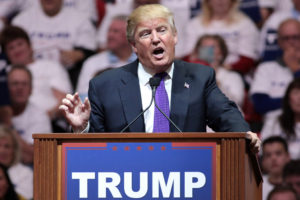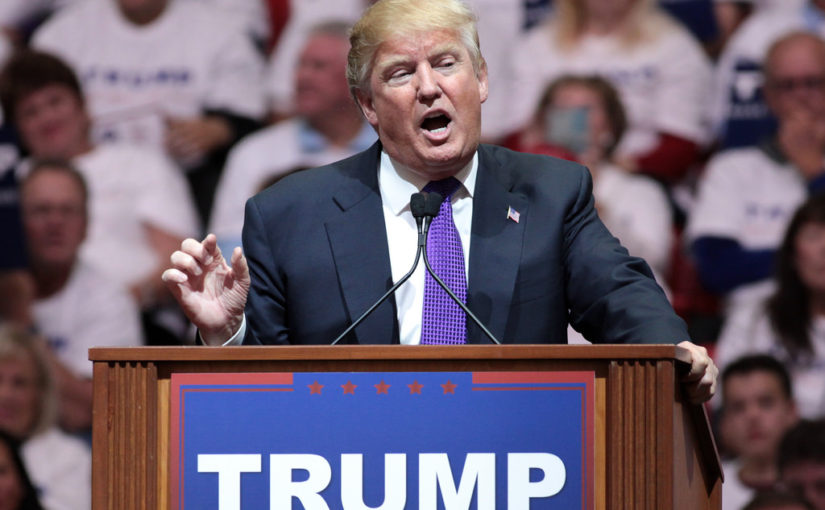
Throughout this election cycle, there have been many issues discussed: immigration, gun control, reproductive rights and national defense, to name a few. While these are all very important issues that needed to be discussed in a public platform, there are a few areas that have yet to be touched, namely: What about the arts?
In 1965 under President Lyndon B. Johnson, the National Endowment for the Arts was put in place. This organization funds and supports all Americans who want to participate fully in the arts. This is the biggest national organization established in the United States dedicated to arts education and support. The John F. Kennedy Center for the Performing Arts, located in Washington, D.C., is the largest national performing arts center. The president even has a committee established for the continuation of arts education in schools across America, called the President’s Committee on Arts and Humanities.
The John F. Kennedy Center for the Performing Arts, located in Washington, D.C., is the largest national performing arts center. The president even has a committee established for the continuation of arts education in schools across America, called the President’s Committee on Arts and Humanities.
With all this said, will President-elect Donald Trump continue a proud tradition of arts education and support, something that hasn’t been limited to party lines in the past?
According to an interview conducted by The Washington Post in March 2016, when Trump was asked about whether the U.S. government should fund arts education, Trump said Congress determines spending priorities. However, he also stated, “What is most important is that we examine how one-size-fits-all approaches imposed by the federal government have corrupted the availability and efficacy of liberal arts education. Critical thinking skills, the ability to read, write and do basic math are still the keys to economic success. A holistic education that includes literature and the arts is just as critical to creating good citizens.”
In the same interview, Trump also stated he would take on the responsibility of choosing arts entertainment for White House-sponsored events, part of the roles of the president. When asked about choosing someone to give a reading, sing the National Anthem or artists visiting the First Family and the president himself, Trump very clearly stated, “Supporting and advocating for appreciation of the arts is important to an informed and aware society. As president, I would take on the role.”
From 1994 to 2010, Trump has donated close to $500,000 dollars to arts-affiliated organizations in New York, according to a newsletter by the nonprofit arts group Americans for the Arts.
Yet despite these positive art-related answers, Trump remains unclear about his intentions for the arts in America. Trump opposes the Common Core initiative, which sets education standards in the United States so all students, regardless of their background or education, can be expected to have similar base knowledge when entering college. Common Core includes initiatives in English language arts and literacy, a facet of arts education (this according to the previously cited Americans for the Arts newsletter).
Similarly, he also opposes the education department determining education spending. In The Washington Post interview, Trump said he would let local and state governments, as well as parents, decide what their children should learn. This isn’t much different from typical Republican policies, which tends to decentralize federal power to states.
Trump also plans on making it harder for students pursuing a liberal arts degree to get loans. Trump’s campaign co-chair Sam Clovis revealed in a May 2016 interview with Inside Higher Ed that the Trump administration may make it more difficult for students pursuing a liberal arts degree to receive federal loans because of their post-election prospects.
“If you are going to study 16th-century French art, more power to you,” Clovis stated. “I support the arts. But you are not going to get a job.”
This stems from the fear students won’t pay off their student loans, but it deeply hurts anyone interested in an arts degree who can’t pay for it without federal student loans.
At the time being, Trump seems very open to working with other governmental organizations to continue to support and fund the arts. The biggest downfall many arts organizations are sensing is just how much budget is going to be spent protecting their passion.
As of February 2016, according to the National Endowment for the Arts, the arts have contributed $704.2 billion to the national economy. The NEA has appropriated roughly $148 million to the arts this year. This is directly related to Congress increasing their appropriation budget in December of last year from $147 to $148 million. This extra million was good news for arts advocates.
Nationally, Americans strongly agree with increasing funding to the arts. In March 2016, Randy Cohen wrote in a post for Americans for the Arts about the national attitude toward arts spending. After surveying just over 3,000 Americans, 32 percent strongly approved of local government funding grants to artists and organizations and 29 percent believed the same for state government. Nationally, 43 percent believed the federal government does not spend enough on the arts and 55 percent approve increasing federal arts grants.
Trump has not been as vocal about his arts support as he has on other issues. His mixed responses to The Washington Post about arts support and funding still begs the question of what he will do with arts spending. But until any concrete plan is made clear, there is no definitive answer, just the facts including his previous sentiments and current policy reform ideas.
All links to sources cited in this article can be found at ndsuspectrum.com.
